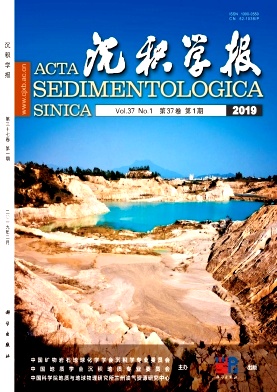Characteristics of Distribution and Ecology of Recent Ostracods from Dongting Lake
doi: 10.14027/j.issn.1000-0550.2018.126
- Received Date: 2017-10-10
- Rev Recd Date: 2018-04-16
- Publish Date: 2019-02-10
-
Key words:
- recent ostracodes /
- distribution and ecology /
- Dongting Lake
Abstract: In and around Dongting Lake, which is the second largest freshwater lake in China, provides an important window for studying Chinese Holocene paleoclimate evolution and global change. Research of the Holocene paleoclimate in the area is seriously deficient without quantitative studies. Detailed ecological investigation of recent ostracods is an essential precondition and foundation for quantitative reconstruction of paleoclimate using fauna data. Recent ostracods from Dongting Lake are described first, including six genera and 10 species, Schellencandona cf. belgica, Ilyocypris bradyi, I. salebrosa, Fabaeformiscandona fabaeformis, Cypria kraepelini, Typhlocypris cf. rostrata, Cypridopsis vidua and C. sp. (comprising three species). These species were reported initially in Hunan Province. Descriptions of S. cf. belgica and T. cf. rostrata are rare in China, especially the latter. S. cf. belgica, I. bradyi and F. fabaeformis are the predominant species, with wide distribution and high abundance, while I. salebrosa has relatively low abundance and is of limited distribution. C. kraepelini and T. cf. rostrata are relatively highly abundant, and C. vidua and C. sp. are of low abundance. There are no obvious differences in the habitat parameters of these species; their general habitat data is: water temperature 20.33 ℃, pH 7.34-8.60, dissolved oxygen content 5.23-9.01 mg/L, electrical conductivity 197-391 μS/cm, and water depth 1.0-8.4 m (tending towards 1-4 m). F. fabaeformis and C. kraepelini are found at a somewhat greater depth than previously thought, possibly because the water in Dongting Lake is relatively mobile. It is possible that I. salebrosa favors warm, shallow water. This study supports quantitative reconstruction of the Holocene paleoclimate in the area using ostracods, and enriches the habitat data of recent ostracods in China.
| Citation: | CHEN Liang, LIU Jiang, TANG ZhenPing, LIU Shan, HUANG Wei, HAN ShiLi, WANG ZhengQing, XIE YanShi. Characteristics of Distribution and Ecology of Recent Ostracods from Dongting Lake[J]. Acta Sedimentologica Sinica, 2019, 37(1): 143-154. doi: 10.14027/j.issn.1000-0550.2018.126 |






 DownLoad:
DownLoad: